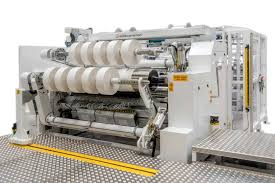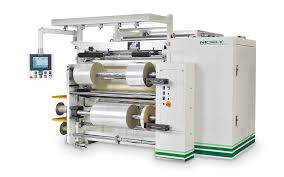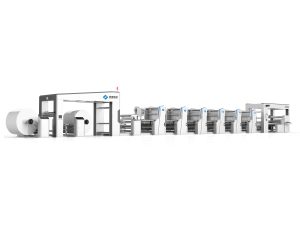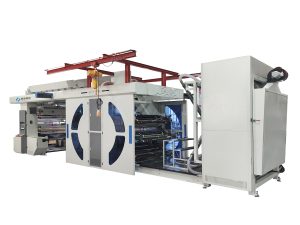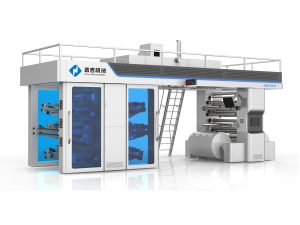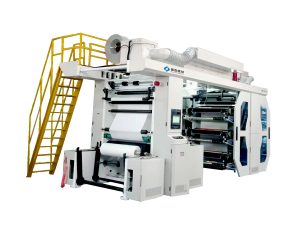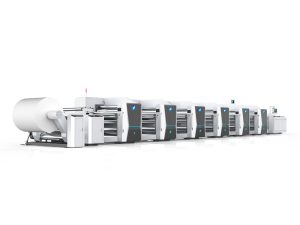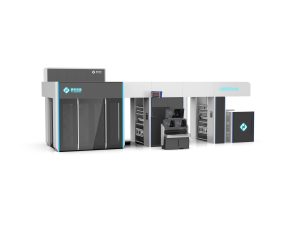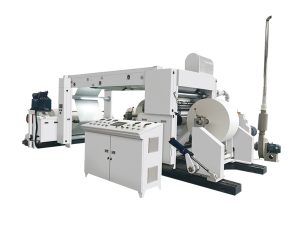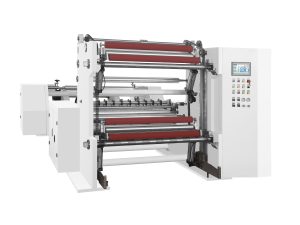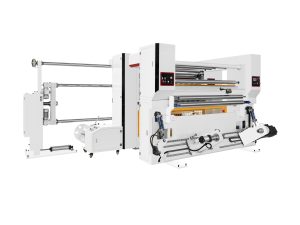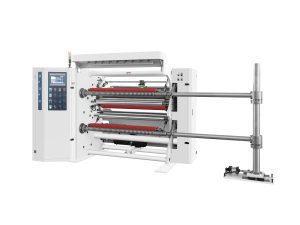Slitting is a precision converting process used to cut large rolls of materials—such as paper, plastic film, foil, fabric, and metal—into narrower rolls. This process is essential across industries such as packaging, printing, automotive, and textiles.
If you’ve ever asked, “What does slitting mean?”, think of it as slicing a large pizza into smaller slices—only instead of pizza, it’s continuous rolls of flexible material.
A high-performance roll slitter ensures clean edges, precise widths, and consistent results. However, choosing the right type of slitting machine depends on the material, thickness, and end-use application.
In this guide, we break down the core types of slitting techniques, explore popular slitter machine types, and help you determine the best solution for your specific needs.
Table of Contents
Toggle1.Core Types of Slitting Techniques
Understanding the slitting method is crucial before choosing the machine. The most common slitting methods are:
1.1Razor Slitting
Razor slitting uses stationary razor blades positioned across the material web. It’s ideal for thin plastic films (like BOPP, PET, and PVC), providing clean and economical cuts.
- Advantages: Low cost, easy setup, ideal for lightweight materials
- Best for: Plastic films, thin laminates
- Note: Blade wear can occur quickly; unsuitable for thicker materials
1.2 Shear Slitting
Shear slitting mimics scissor-like action using male and female rotary knives. It’s preferred for materials requiring a clean, precise cut.
- Advantages: High speed, long blade life, superior cut quality
- Best for: Paper, metal foils, films, nonwovens
1.3 Score Slitting (Crush Cutting)
This method involves a circular knife pressing against a hard roller, crushing the material to create a slit.
- Advantages: Works well for tough, thick, or layered materials
- Best for: Foams, fabrics, rubber, and laminates
- Caution: Can cause edge deformation on sensitive materials
Comparison Table: Slitting Methods
| Slitting Method | Cutting Action | Material Type | Pros | Cons |
| Razor Slitting | Blade slicing | Thin films | Economical, fast setup | Blade wear, limited to thin |
| Shear Slitting | Scissor-like motion | Paper, films, foil | Clean edges, high speed | Requires alignment |
| Score Slitting | Knife pressure crush | Tough materials | Good for thick/rough media | Rougher edges |
2.Types of Slitting Machines
Each slitting technique requires a matching slitter machine. Let’s explore the main types of slitting machines:
2.1 Slitter Rewinder Machines
Slitter Rewinder Machines are the most common slitting systems. They unwind a master roll, slit it using razor or shear blades, and rewind it into smaller rolls.
- Key Features: Tension control, auto blade positioning, high-speed rewinding
- Applications: Packaging film, labels, paper, and foil
【Slitter Rewinder Machines | Reliable Slitting & Rewinding Equipment – Elite Cameron】
2.2 Duplex Slitter Machines
Duplex Slitters use two rewind shafts and offer excellent tension control, especially useful for sensitive or stretchable materials.
- Benefits: Smooth winding, compact roll finishing, improved roll geometry
- Used in: Converting film, aluminum foil, and nonwoven fabric
【Duplex Slitter | Food Can Production Line | JORSON】
2.3 Duplex Center Winder Slitter
In this variant of duplex slitters, both rewinds are driven at the center, enabling superior control over roll tension.
- Best for: Materials requiring high precision in tension control
- Advantage: Reduces material stretching or wrinkling
【Duplex Center Slitter Rewinder (A Type) – Nicely Machinery】
2.4 Drum Slitter Rewinders
This machine uses a large drum as the support base for rewinding and slitting. Known for its stable performance at high speeds.
- Applications: Ideal for large diameter or heavy-duty slitting
- Pros: Durable, reliable at high speed, supports thicker webs
【Heavy Duty Drum Type Slitter Rewinder Machine – 2025】
3.Choosing the Right Slitter for Your Application
Choosing a slitter isn’t “one size fits all.” Ask these questions before selecting:
✅ What material are you slitting? (Thickness, texture, sensitivity)
✅ What edge quality do you need? (Shear for precision, score for heavy-duty)
✅ What output roll width and speed do you require?
✅ Is automation important for your process efficiency?
Suggested Matches
| Material Type | Recommended Slitting | Machine Type |
| BOPP Film | Razor Slitting | Slitter Rewinder Machine |
| Aluminum Foil | Shear Slitting | Duplex Slitter |
| Rubber Sheet | Score Slitting | Drum Slitter Rewinder |
| Tissue Paper | Shear Slitting | Duplex Center Winder |
For companies with frequent material changeovers, modular design slitters or automatic blade positioning systems may significantly reduce downtime
Final Thoughts
Slitting is an essential process in modern converting industries. Understanding what slitting means, how various slitting techniques work—razor slitting, shear, and score—and how to match them with the right roll slitter machine is the key to productivity and product quality.
From Slitter Rewinder Machines for general-purpose jobs to Duplex Slitters for tension-sensitive materials, choosing the right equipment can dramatically enhance your operational efficiency.
At Zontai Machinery, we provide customized, high-performance slitting solutions designed for precision, reliability, and speed.
Need help finding the right slitter for your product?
Contact us today for a custom quote and technical consultation.

